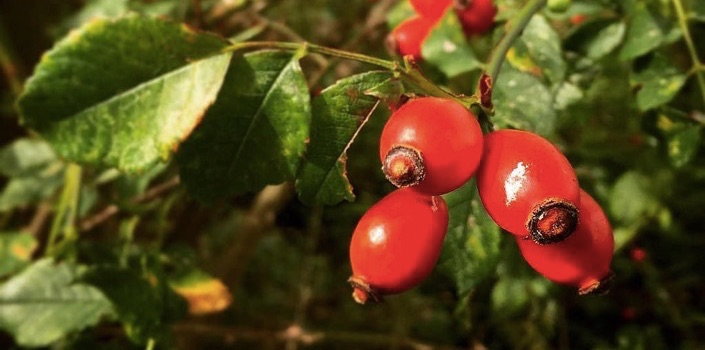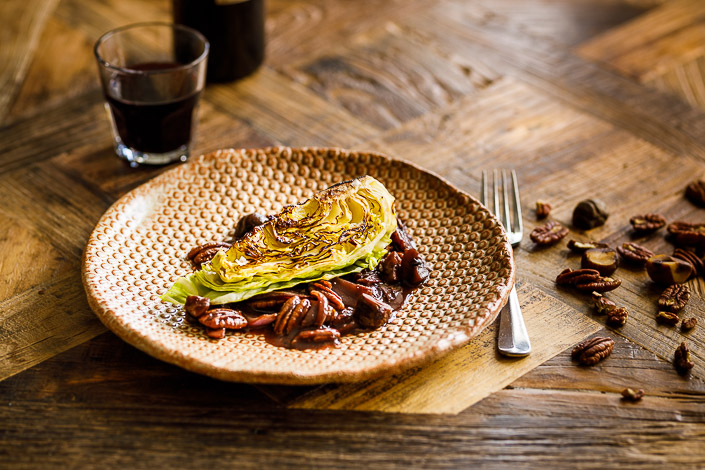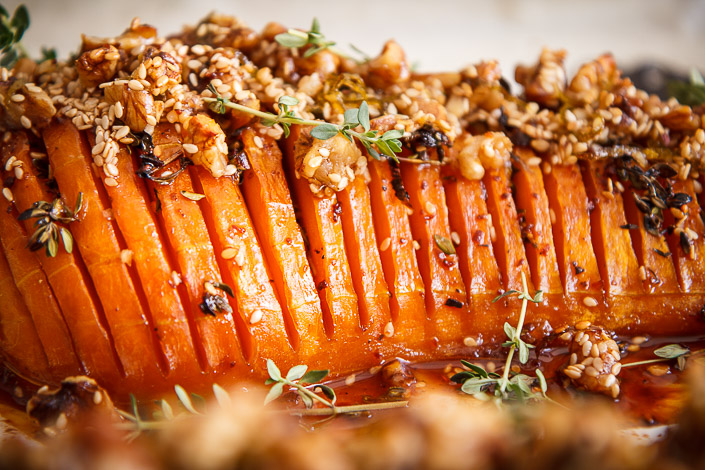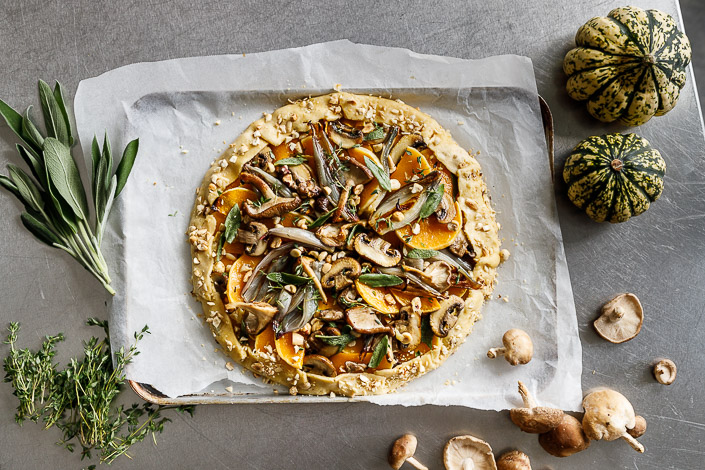Rosehip and Apple Jelly

Rosehips are a beautiful autumn fruit that punctuates country walks in November and December. There's no mistaking their small, oval, pillar-box shape and striking red fruit that hangs over hedgerows. They come from the same family as apples so it's no wonder that putting the two together results in a wonderful autumn hedgerow jelly. Any wild hips are perfect for this. They need to be ripe but don’t have to be mushy, as several frosts will turn them. But they must be ripe to have the full flavour.
Rosehips can be tricky to harvest because of the thorns, but it’s so satisfying when you learn the knack. Don’t under any circumstance bite into a hip, because inside are seeds surrounded by short bristly hairs. These will make you gag and will also get buried in your fingers. Just pick the hips, take them home and follow the recipe below. Brace yourself for the anticipation that comes as your jelly evolves!
We like to make rosehip and apple jelly to give away as homemade Christmas gifts. What could be more special than a hedgerow jelly made with winter fruits that you foraged by hand?! For presents, bottle the jelly into 1/2 lb square or hexagonal jars, which look very beautiful. Cut some suitable fabric covers, tie with a ribbon, and all the stress of Christmas presents is solved. This jelly is excellent with roast vegetables, cheese, as a filling for your Victoria sponge, on croissants, or on your best sourdough. Just don’t forget to make enough to keep a jam-makers ‘dozen’ for yourself.
Rosehip and Apple Jelly
Ingredients
- 1.5 kg rose hips, ripe and whole
- 1 kg dessert apples, windfalls are fine
- 2 kg white, granulated sugar
- 1 lemon
Method
- Cut the tuft and stalk ends off the hips, place in a lidded pan, just cover with water, and place on stove to boil. When boiling turn down to the merest simmer. Replace lid and leave to simmer until soft. Depending on ripeness, they can take from 30 to 60 minutes.
- When hips are soft, mash gently with wooden spoon to open them up, leave to cool.
- Wash, halve and then quarter the half apples, without peeling or coring them. Place in a second pan and just cover with water. Bring to the boil, then turn heat down to a mere simmer without covering (they will boil over easily and messily if covered), until soft and collapsing (15-20 minutes). Remove from heat to cool.
- Using two jelly bags, empty the contents of the rose hip pan into one, and secure hanging from a cupboard door-handle, to drip into a bowl underneath. Tip the contents of the apple pan into the second bag and secure as before, over a bowl. Leave both to drip for 12 hours.
- Measure the filtered apple and rose hip liquids and combine them in a large pan. For every litre of the filtrate, add 1kg granulated white sugar and stir to dissolve.
- Juice the lemon, filter it through a fine sieve and add to the liquid.
- Place the pan on a low heat, stirring be make sure the sugar is dissolved. Now, place two small, flat plates in the fridge. Turn the oven on to 130C and place the cleaned small jars (but not the lids) upside down on the rack to sterilize them. Turn the heat off as soon as 130C is reached, but leave the jars in the oven until needed.
- Start turning up the heat slowly until the pan boils, then watch carefully, keep it as high as it will happily go without boiling over. With the added apple, the jelly should reach setting point anywhere form 10-15 onwards. You must take it off the heat as soon as you are sure setting point has been reached.
- Use the wrinkle test for setting point. It is more sensitive than the 105C temperature test…trust me.
- As soon as setting point has been reached, remove the pan from the heat. Allow to rest, then pour into the jars, place the lids on the jars, tighten, and prepare the labels.
For more ideas with foraged food, check out or wild and foraged food recipes or come along on one of our foraging courses!
Find us on Facebook, Twitter, Pinterest and Instagram where we are chatting about all things foodie and, if you like this post, please share it! To keep up to date with events and goings on at the cookery school sign up for our newsletter.



